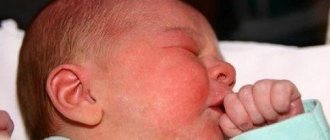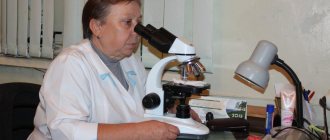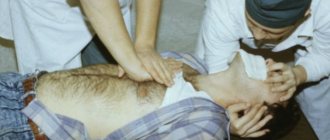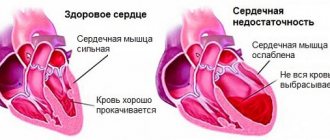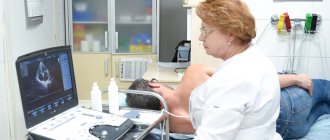Any deviations from the norm are alarming and frightening, but often people learn to live and coexist with something that does not seem to cause them significant discomfort. Such a pathology, for example, is constantly cold hands.
It would seem that there is no actual harm from such a problem, you just have to try to warm your limbs more often so as not to be branded as the Snow Queen. However, doctors note that this indicator should not be ignored, since the lack of warmth in the hands is a sign of serious disorders in the body.
“As a rule, patients in older age groups complain of a feeling of coldness in the hands and feet. This is primarily due to impaired blood supply as a result of changes in the vascular wall, loss of its elasticity, as well as weakness of the heart muscle, which is not able to pump blood, overcoming vascular resistance, to the parts of the body most distant from the heart: hands and feet. Age-related hormonal changes are also of no small importance in the blood supply to the extremities,” says Ph.D., surgeon of the highest category, phlebologist Andrei Begma . Therefore, older people should not be shy and hide the manifestations of such pathology, but consult with a doctor about how this situation can be corrected.
Iron-deficiency anemia
Iron is the main component of hemoglobin in the blood, the main transport vehicle for oxygen. Lack of iron leads to disruption of metabolic processes in cells, including energy. This occurs due to poor nutrition, impaired absorption of iron in the gastrointestinal tract, increased blood loss (nasal, uterine, etc.), with a special need for it (pregnancy, lactation, rapid growth), etc. Additional signals - pallor skin and mucous membranes, dizziness, fatigue, tinnitus, rapid heartbeat.
What to do?
First of all, a clinical blood test is required. The normal hemoglobin level in children under 6 years of age is 110 g/l, in children over 6 years of age and adults – 120 g/l. A special diet is important - less milk, more meat, fruits and vegetables. Iron supplements are taken in combination with ascorbic acid.
Useful tips
Tip #1
To distribute the blood evenly and return it to the legs, it is recommended to apply a heating pad or a bottle of hot (but not very hot) water to them. The legs can also be rubbed with massaging movements, thus causing the blood to move faster.
Tip #2
Doctors advise healthy people not to lower their temperature if it is less than 38-38.5°. But here this rule does not always work. For patients with diabetes, heart failure and chronic respiratory pathologies, it is very important to reduce the temperature in a timely manner, especially if it is difficult to tolerate.
For some patients, it is possible and necessary to bring down the temperature even with a slight increase
The fact is that the thermoregulation center is located in the brain, next to the respiratory center. This is why a fever can cause shortness of breath and suffocation.
Anti-Soviet
If you want to intensify the spasm and harm yourself even more, you should rub your limbs with vodka. Vinegar will also work.
Vegetovascular dystonia
In this case, hot and cold flashes, lack of air, dizziness are felt, and blood pressure rises and falls. Irritability increases and fatigue increases. From time to time I experience pain in the heart and tingling in various parts of the body. Moreover, the examination does not reveal signs of damage to organs and systems. The cause of the malaise is a disruption of the autonomic nervous system, which regulates the entire body.
What to do?
It often occurs against the background of many diseases, so it is important to undergo a full examination, especially by an endocrinologist and neurologist. Physiotherapy, exercise therapy, and psychotherapy help to cope with the disease.
Necessary therapy
Treatment, of course, will be selected based on what disease caused the problem. “In treatment, they use vasoactive drugs that improve blood circulation, physiotherapy, massage, normalize hormonal levels, and select a therapeutic diet,” says the phlebologist.
In a situation where all measures are taken on time and the problem is not ignored, there is every chance to get rid of the unpleasant symptom and constantly enjoy the feeling of warm, not icy hands.
There are contraindications, you should consult your doctor
Thyroid diseases
The thyroid gland is a key link in the hormonal regulation of the entire body. With hypothyroidism (lack of thyroid hormones), metabolic processes slow down. Lethargy and lethargy, drowsiness, and excess weight appear. The person feels depressed. The face, especially the eyelids, swells, and the pulse slows down. The skin becomes dry, often flakes, and thickens. The functioning of the mechanisms responsible for maintaining normal body temperature is disrupted. When thyroid hormone levels are low, a person often feels cold.
What to do?
It is important to undergo an examination by an endocrinologist, do an ultrasound of the thyroid gland, and take a general blood and urine test. If necessary, the doctor may prescribe additional X-ray and magnetic resonance imaging, computed tomography, etc.
Questions and answers - Temperature in a child
Izyakov Dmitry Nikolaevich
Pediatrician
April 25, 2021
In 2015, in the series of clinical recommendations of the Union of Pediatricians of Russia, the collection “Feverish Child” was published. Diagnostic and treatment protocols." It revises some points regarding the actions of doctors and parents when the temperature rises in children with various diseases. In this article, I tried to collect answers to the most frequently asked questions by parents, taking into account modern recommendations and practical experience.
What temperature is a reason to panic?
What you don't need is panic. According to modern data, only temperatures above 40 degrees can harm children with chronic diseases.
Initially healthy children tolerate high fever without health consequences. A healthy child is simply not able to heat himself up to dangerous levels. But it can be heated this way from the outside, by wrong actions. For example, with a normal fever, cover with a blanket when the air temperature in the room is above 22°C. But this is no longer a fever, but hyperthermia, a condition in which you need to call an ambulance. The main difference is that antipyretics and rubdowns do not help.
But does a high temperature indicate a dangerous disease?
In children, it is not the thermometer numbers that indicate danger. It is not the temperature that is dangerous, but the disease that caused it. A high temperature can also occur with an uncomplicated acute respiratory viral infection, which will subside in 2-3 days. Or in case of a safe childhood infection - sudden exanthema, also called: roseola, three-day fever, temperature is often 40-41°C. And with a dangerous disease, meningitis, it can often not exceed 39.5. There are also dangerous diseases accompanied by fever. This is what requires calling an ambulance:
- age up to 3 months
- the appearance, along with cold hands and feet, of a “marble” pattern on “goose bumps”
- absence of visible signs of illness, except for elevated temperature in a child under 3 years of age
- maintaining a temperature above 38.5 on the 4th day of illness with the appearance of rapid breathing
- skin rash that does not blanching when pressed with a finger
- inability to press the chin to the chest and/or bulging fontanelle
- abdominal pain
- pain in the legs and/or arms
- the temperature 2 hours after taking the antipyretic drug became higher, this is a sign of overheating - hyperthermia.
What about cramps?
They are observed in approximately four children out of a hundred and do not directly depend on the height of the temperature rise. In addition, they are not hazardous to health, although they undoubtedly frighten parents very much. Help for febrile seizures is to turn your head to the side and provide access to fresh air. All necessary medications are administered by an ambulance doctor, who must be called and met by another adult.
And is there really nothing dangerous about high temperatures?
Yes, this is dehydration - loss of fluid due to evaporation through breathing and sweat. When a child has a fever, it is difficult to persuade a child to drink, but it is at this moment that he needs it.
What about cold hands and feet?
Most often, this is a short-term phenomenon that does not require medical intervention and does not pose a threat to health.
How much do you need to lower the temperature?
1-1.5 degrees is enough, because only by raising the temperature does the child’s body fight infection.
At what thermometer readings should antipyretics be given?
I give general recommendations; you need to consult with the doctor who is treating your particular child.
- In children under 3 months of age - from 38°C
- In children older than 3 months who do not have chronic diseases - from 39°C
- In children with diseases of the brain, heart and lungs - from 38.5°C
Are these numbers the only basis?
No. The numbers on the thermometer do not matter when starting to take an antipyretic if the child:
- does not tolerate high temperatures very well, behaves restlessly
- has a “marbled” pattern on pale “goose bumps”
- trembles, he gets chills
What medications should I use?
Only based on ibuprofen and paracetamol, the names of the active substance are always indicated on the packaging under the antipyretic brand.
Why don't they help?
The most common reason is incorrect dosage, calculating the dose based on the child’s age and not on the weight of the child. The second common cause is dehydration. Third - the child is dressed too warmly, covered, the room is warm.
What dose should I give?
The most popular antipyretic based on ibuprofen is “Nurofen for children” in the form of syrup. You need to divide the child's weight in kilograms in half. For example, if the weight is 10 kg, then 10:2 = 5 ml of children's Nurofen and should be given to him. This dose can be repeated no earlier than 8 hours have passed.
The most successful antipyretic in terms of release form is “Efferalgan” syrup for children with the active ingredient paracetamol. Its measuring spoon allows you to take the dose of medicine directly by weight, without calculating it in mg.
All other drugs “Panadol”, “Calpol”, “Paracetamol” syrup, etc. require mathematical operations, multiplying the weight by 0.6. For example, if a child weighs 10 kg, then 10 * 0.6 = 6 ml of Panadol should be given. This dose can be repeated after 6 hours.
Is it possible to alternate them?
It is possible, but at least 2 hours should pass between taking paracetamol and ibuprofen. If taken together, there is a risk of kidney damage.
Why not other medications for fever?
Medical studies have not revealed any real benefits from other drugs, but they have identified the harm of each:
- “No-spa” has no effect on cold hands and feet, but it has a list of side effects.
- "Analgin" is dangerous for the development of loss of consciousness and should not be used by parents without the presence of ambulance and emergency services workers.
- Nise caused liver damage in one of the 250 patients who took it
- Aspirin can cause liver and brain damage in children
How much fluid do you need to drink to reduce your temperature?
For every kilogram of weight, a child needs to drink 4 ml per hour. That is, if a child weighs 10 kg, then every hour he should drink at least 10 * 4 = 40 ml.
Is it possible to wipe?
After taking an antipyretic, you can wipe with water at a temperature 1-2 degrees lower than the child’s body temperature. That is, if it is 40 °C, then the water temperature should be 38-39 °C. You need to wipe all areas of the skin that are hot to the touch, leaving them wet until dry. Then measure the temperature again. A decrease of 1-1.5 degrees is enough to stop the procedure.
What to do with cold hands and feet?
They need to be carefully warmed, gently rubbing until the skin becomes slightly red, using wool, a terry towel, or just your palms.
How long to expect the effect of antipyretic and rubdown?
Two hours. If the temperature has not decreased, then a second antipyretic should be given, and rubbing and drinking should continue for another 2 hours. If the temperature has not decreased and/or has increased, call an ambulance.
How can the ambulance help?
Assess the child’s condition and determine whether hospitalization is necessary in this case. Provide assistance by injecting medications and medical methods to reduce the child’s temperature. It is for fever, in fact, it is needed in a very small percentage of cases, the ineffectiveness of antipyretics associated with hyperthermia - a condition complicating fever, when the child is not able to give off body heat.
How to measure temperature correctly?
Measuring armpit temperature with a mercury glass thermometer in children has already been recognized as the least preferable due to the danger of breaking it. It was replaced by electronic and infrared thermometers. Few people know, but to obtain a result comparable to a mercury thermometer, the electronic one must be under the armpit for the same time. That is, 5 minutes if the child was at room temperature. And 10 minutes if it was at a lower temperature before measurement.
Why do electronic thermometers show lower temperatures?
The reasons are clear: loose pressure, measurement less than 5 minutes, sweat, spasm of skin blood vessels, low battery, lack of factory settings for measuring skin temperature. These thermometers can be used subject to correction. To do this, an adult without a fever puts an electronic one under one armpit and a mercury one under the other. Measures 5 minutes and compares. For example, we received 35.6 and 36.6, respectively. In subsequent electronic measurements you will add 1 degree.
Which thermometer is better?
The temple area has a temperature equal to the axillary one. To measure it, infrared thermometers are used. This is the most optimal method for parents today. For proper use, you need much fewer subtleties: wipe the sweat from your temple, remove your hair, hold it at the correct distance (indicated in the instructions), change the battery on time, set up to measure the temperature of the temporal region (also written in the instructions). The use of other thermometers: nipple, ear, forehead strips is fraught with measurement errors in the direction of underestimation or false increase.
How often should I measure my temperature?
A child with a fever needs temperature control:
- every 6 hours unless antipyretics are required
- every 4 hours when used effectively
- every 2 hours if use is ineffective.
For a child with normal temperature, but with an acute illness, measure every 12 hours in the evening. For a healthy child at risk of an acute illness due to contact or an increase in temperature for vaccination, according to the condition, for control, measure once a day, in the evening. Healthy children without risk of illness do not need it.
Atherosclerosis
There is a thickening and loss of elasticity of the walls of the arteries, a narrowing of their lumen with subsequent disruption of the blood supply to the organs. Hence the cold hands. When cerebral vessels are damaged, tinnitus, dizziness, memory loss, and headache are noted. Eating with an excess amount of animal fat, a sedentary lifestyle, and psycho-emotional stress can lead to this disease.
What to do?
An ECG, ultrasound of the heart and blood vessels, rheovasography, angiography, coronary angiography are performed, blood pressure is measured, lipid levels (cholesterol, etc.) and blood sugar are examined.
Osteochondrosis
Deformation and thinning of the intervertebral discs, muscle spasm lead to compression of the spinal cord, surrounding nerves and blood vessels. Blood circulation is disrupted, hands and feet become cold, a feeling of numbness and aches appears, constant aching pain in the back, headache, and dizziness occur.
What to do?
It is necessary to consult a neurologist. Complex treatment includes physical therapy, physiotherapy, massage, manual therapy, spinal traction (traction), reflexology, and drug therapy. In difficult cases, surgery is possible.
Symptoms of cold fingers
In the absence of external irritants, cold fingertips are a manifestation of pathology. Therefore, it is necessary to conduct a thorough examination of the body to accurately determine the cause of the disease. Negative symptoms that require you to consult a doctor are:
- There is numbness in the fingers without external irritants.
- Pale and bluish tint of the skin even at high temperatures.
- Constant tingling sensation at the tips of the fingers.
- There is difficulty moving, difficulty speaking.
- The presence of dizziness, pain in the arms, fatigue and general weakness.
If there is an unreasonable loss of sensitivity in the fingers, the problem most likely lies in the pathology of the nerve endings and blood vessels.
Additional symptoms may include:
- Cold feet.
- Rough, tight skin.
- The appearance of blisters and open sores.
- Tingling or numbness in the hands.
Symptoms appear differently at different stages. Conventionally, the stages can be divided into three stages. At the first stage, there is an increase in the tone of the vascular walls, which leads to short-term spasms of the fingers. In the second stage, the hands may become swollen or blue, accompanied by severe pain. The third stage occurs after 3-4 years with signs of skin necrosis on the fingertips. As a result of poor blood circulation, wounds on the hands take a long time to heal and ulcers can form.
Scleroderma, Raynaud's syndrome
The fingers or toes become cold, numb, a tingling sensation appears in them, and they become white or even bluish in color. This occurs under the influence of stress or temperature exposure and can last from several minutes to several hours. At the end of the attack, the bluish skin turns red, fever and pain appear. This is Raynaud's syndrome - one of the manifestations of scleroderma. As a result of damage to the blood vessels, many organs and tissues of the body are affected, especially the skin. The face takes on a mask-like appearance, and it is difficult to open the mouth. It is believed that scleroderma is stimulated by viruses, poisoning, and congenital predisposition. This disease occurs 5 times more often in women than in men.
What to do?
At the first symptoms, you should urgently consult a dermatologist. They conduct laboratory tests of blood, urine, immunodiagnostics, X-ray examination of bones and joints, ultrasound of internal organs, and cardiac diagnostics.


